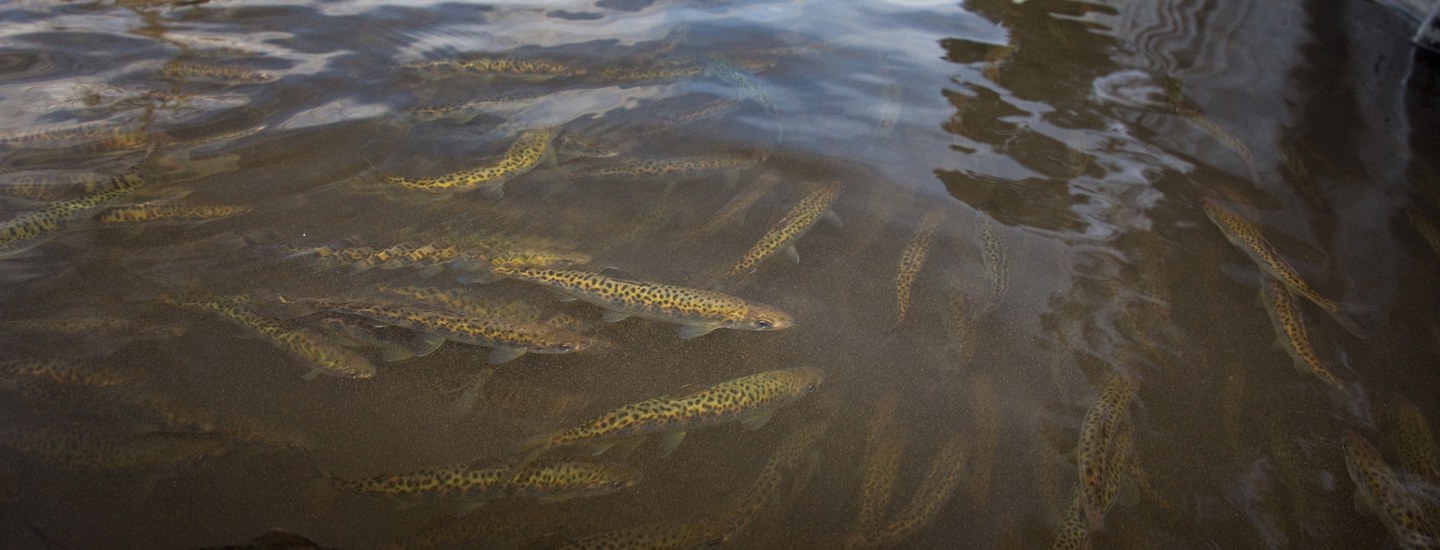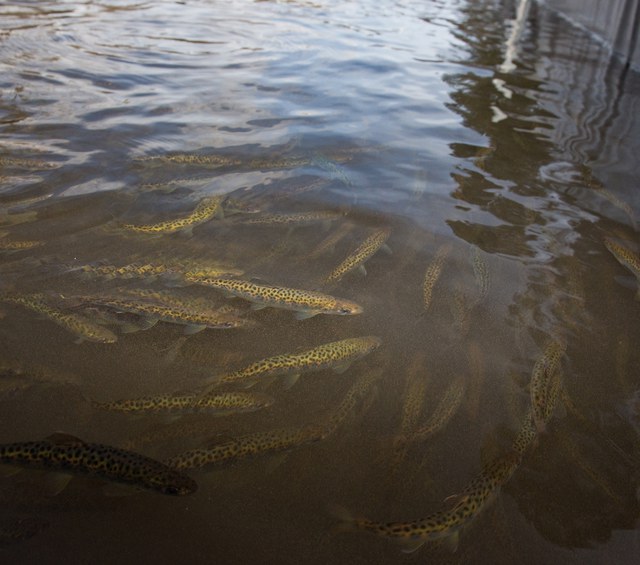Each spring, the Land Trust participates with partner organizations in efforts to reintroduce spring Chinook salmon and summer steelhead in the upper Deschutes River region. This year, from March through May, we are aiding in the acclimation and release of juvenile Chinook and steelhead into Whychus Creek near Sisters and McKay Creek near Prineville. Acclimation is when smolts (1 year old fish) are contained in water from the stream or river they would naturally return to for spawning. Smolts are particularly sensitive to the smell of the water from their home creek and imprint, or store the smell in their brain, to help them find their way back to the same area as an adult.
At Camp Polk Meadow Preserve along Whychus Creek, a large acclimation tank is currently holding 25,000 summer steelhead smolts before their journey downriver. Meanwhile, in McKay Creek at Ochoco Preserve, 4,000 Chinook and 15,000 steelhead have been acclimated this spring. Building an acclimation pond there was part of the first phase of our Ochoco Preserve Project.
At Camp Polk Meadow Preserve, each year a portion of smolts are released directly into Whychus Creek at the Preserve. Other smolts are transferred from the acclimation tank to a stress relief pond along the Deschutes River, below the Pelton Round Butte hydropower project near Warm Springs. There, the fish de-stress from their trip before being released downstream. This two-pronged approach increases the smolts’ chance of survival, and the likelihood of more adult fish returning from the ocean. This year at Ochoco Preserve, all of the smolts are being released into McKay Creek.
In order to track the smolts once they've been released, a PIT (passive integrated transponder) tag is inserted into some of the fish. The PIT tag can be thought of like a microchip for your pet. PIT tag monitoring stations, located at certain points along fish migration routes, record the unique tag number as the fish passes by. In this way, we’re able to monitor the fish’s progress when they head out to the ocean and track them again when they return to spawn.
Meanwhile, we have other exciting reintroduction news to share! In the 1990s a goal was set for 955 steelhead to return upstream each year. This year, more than 950 adult steelhead have been released above the dams to spawn! Over the last several weeks, teams have been conducting redd (fish nest) surveys to count up redds, and in recent weeks kelts (steelhead that have spawned) are being collected at the fish collection facility on their way back to the ocean. These fish are released into the lower Deschutes River below the dams to continue their migration. Confirmation of steelhead spawning above the dams through redd surveys and kelt collection is a great sign of the incremental progress being made toward fish reintroduction success, and shows the importance of ongoing conservation and restoration efforts.
Thanks—and congratulations!—to our partners in this work, Oregon Department of Fish and Wildlife, Portland General Electric, and the Confederated Tribes of Warm Springs; also to our longstanding collaborators in The Deschutes Partnership.
Learn more:


